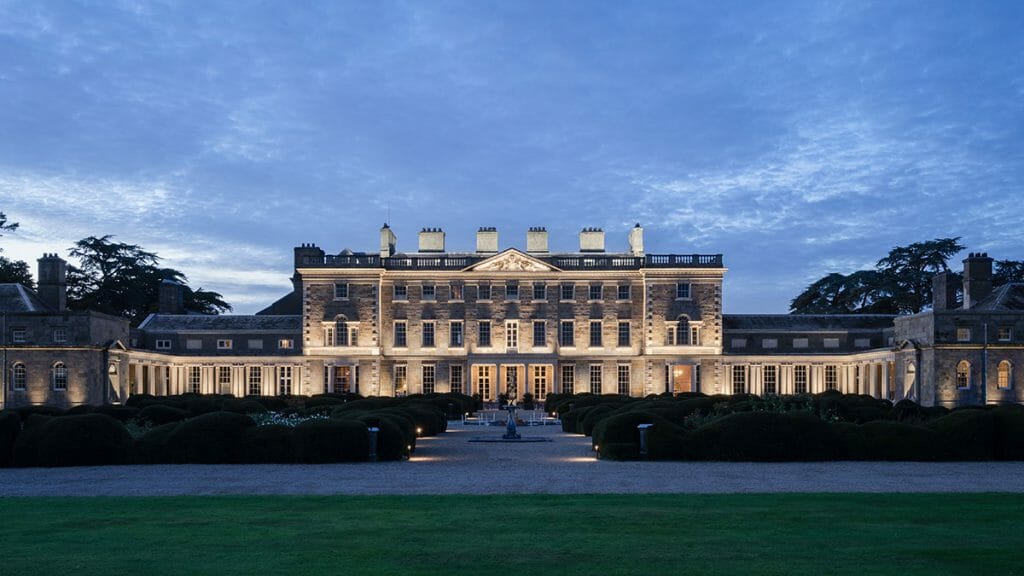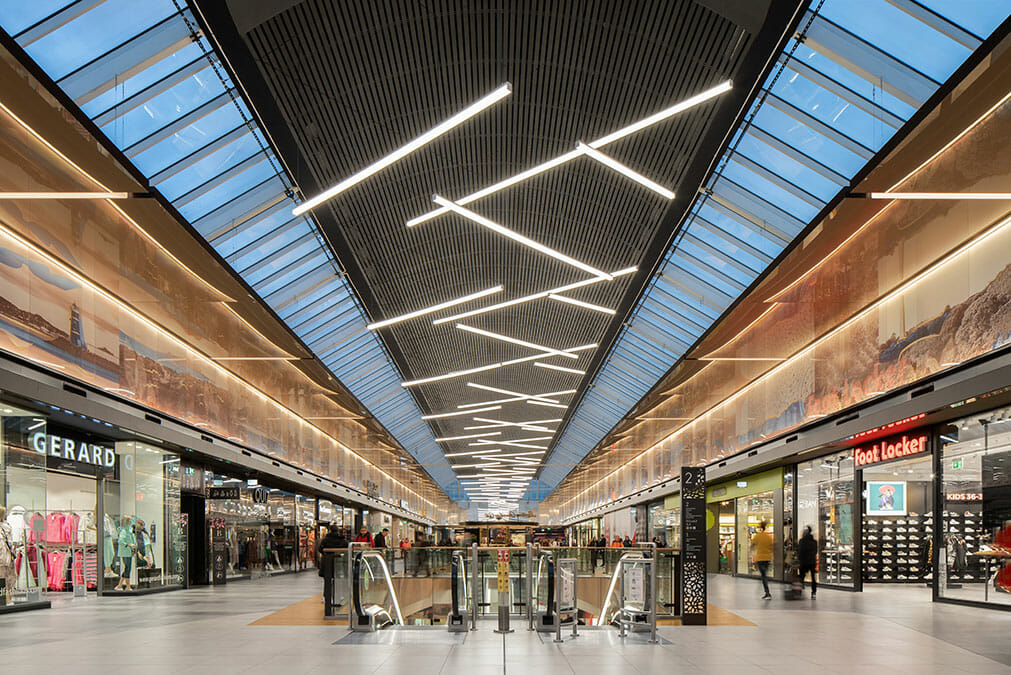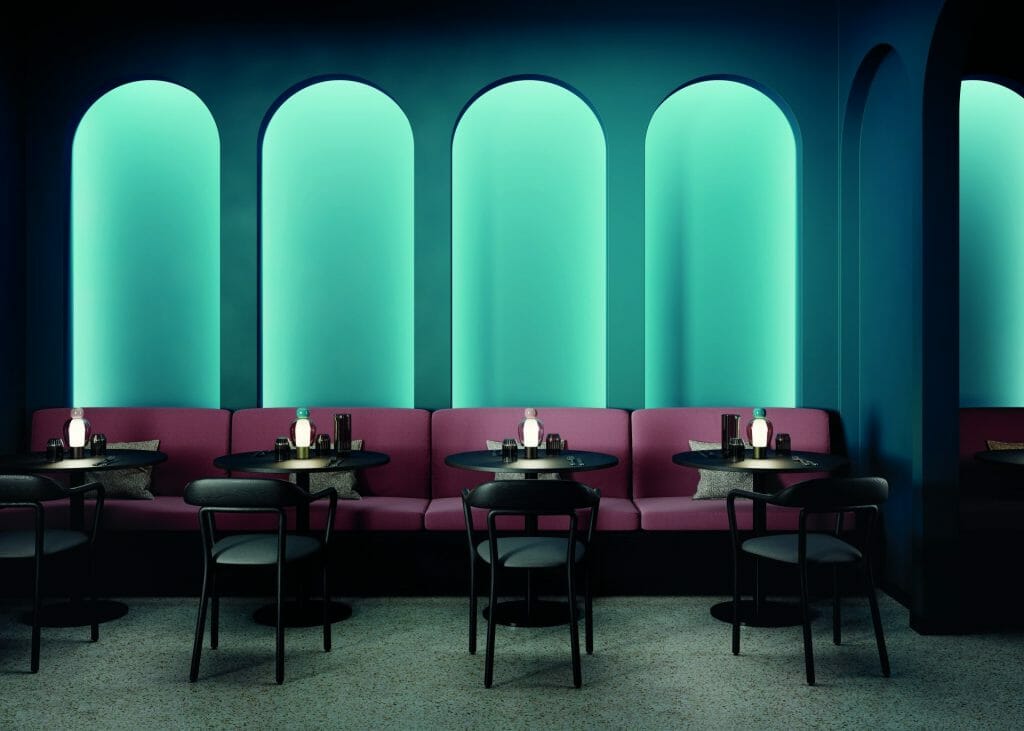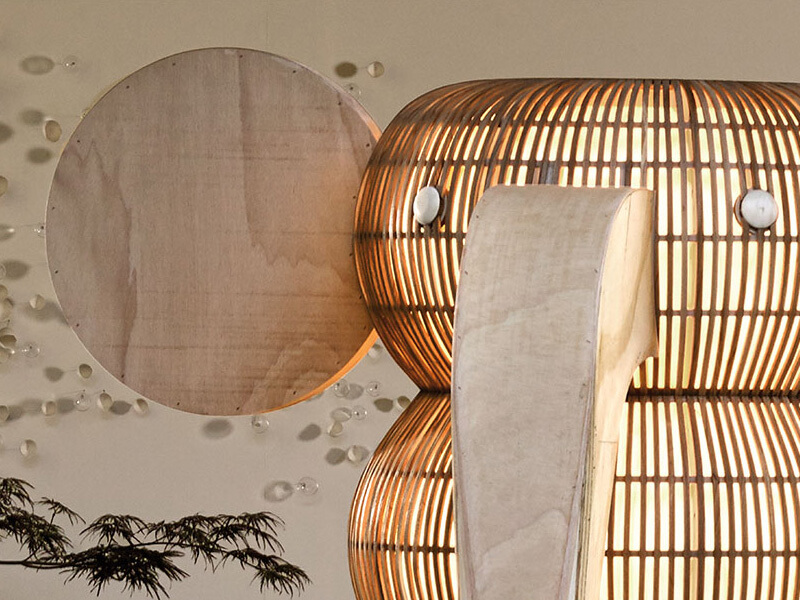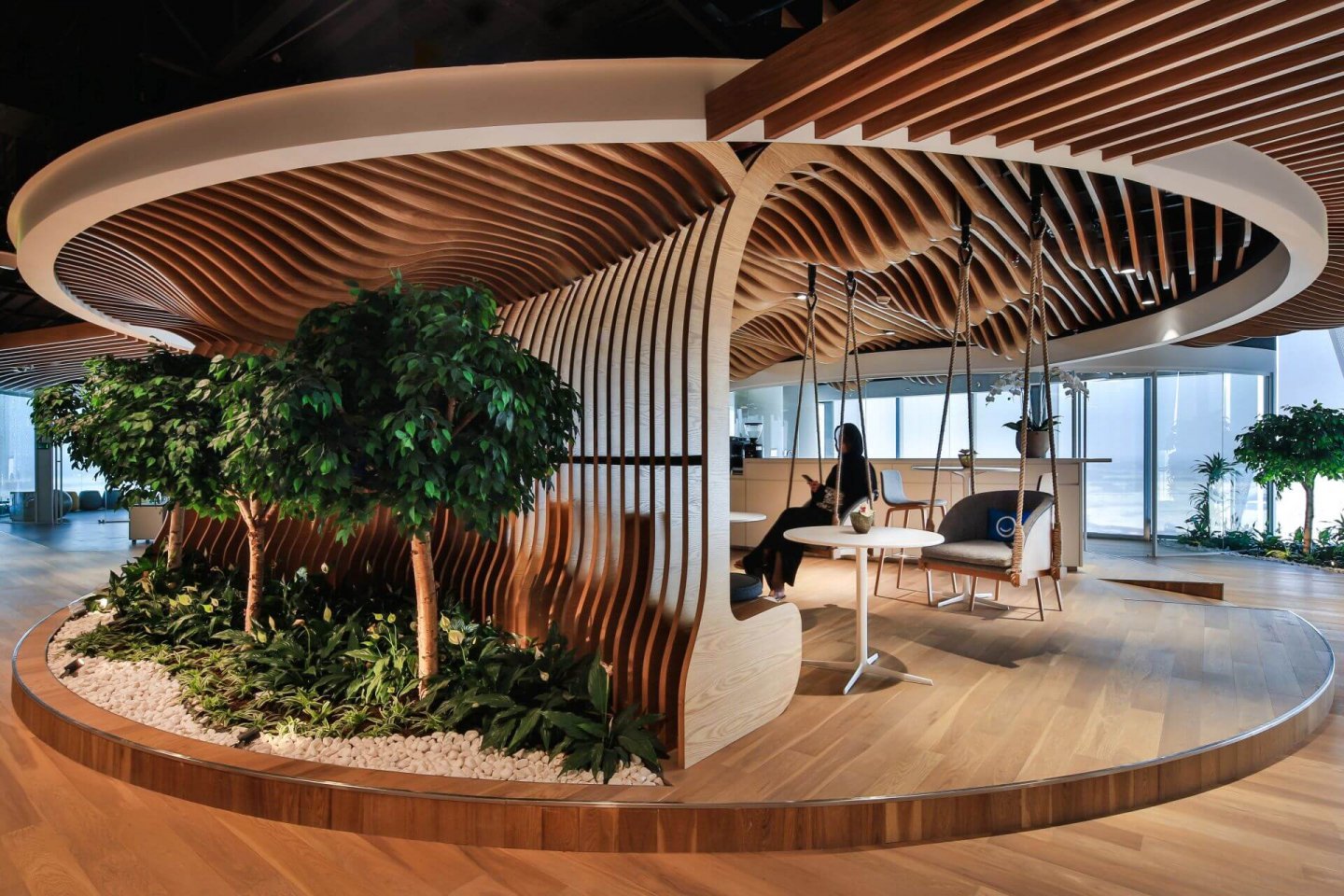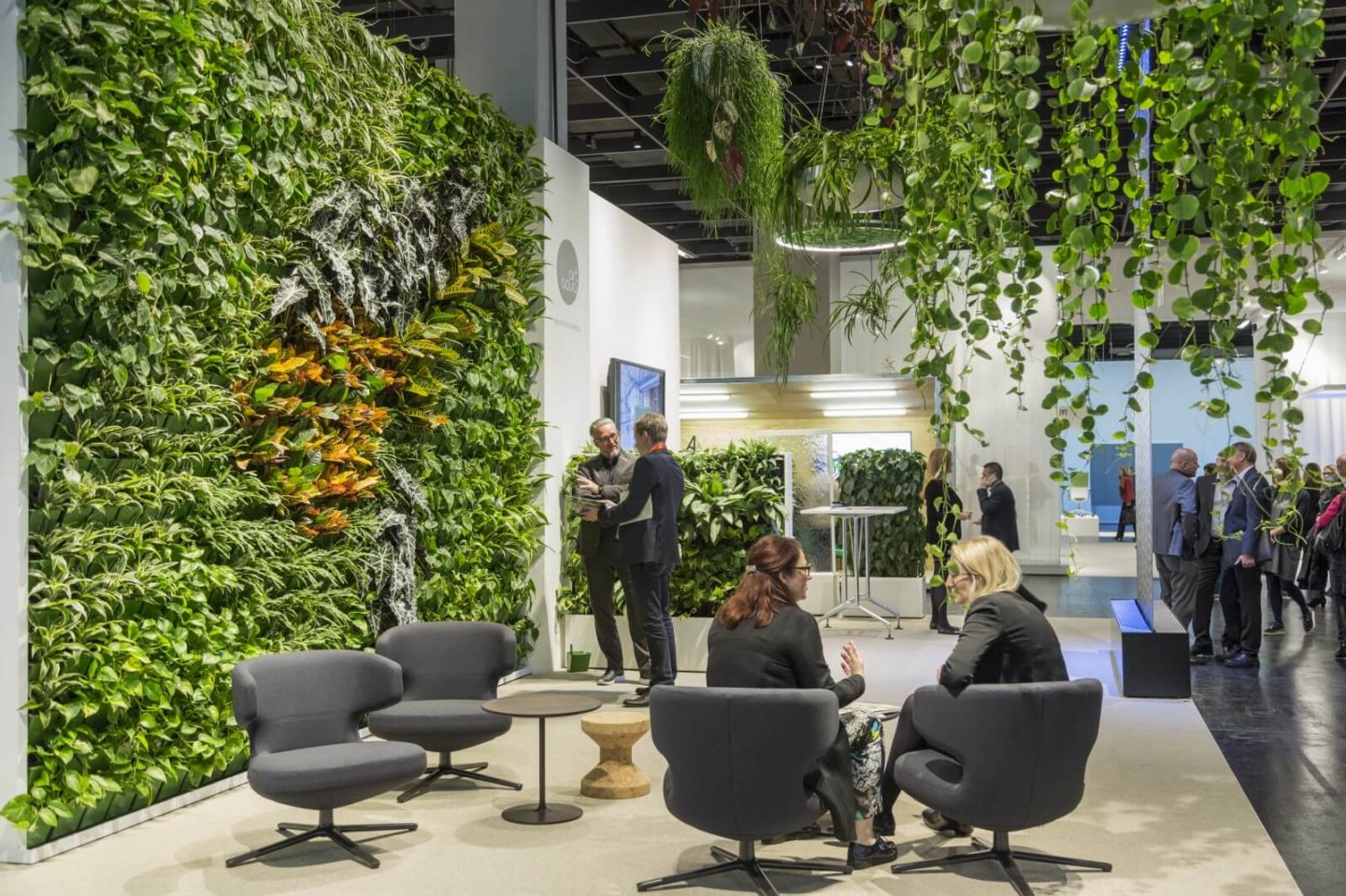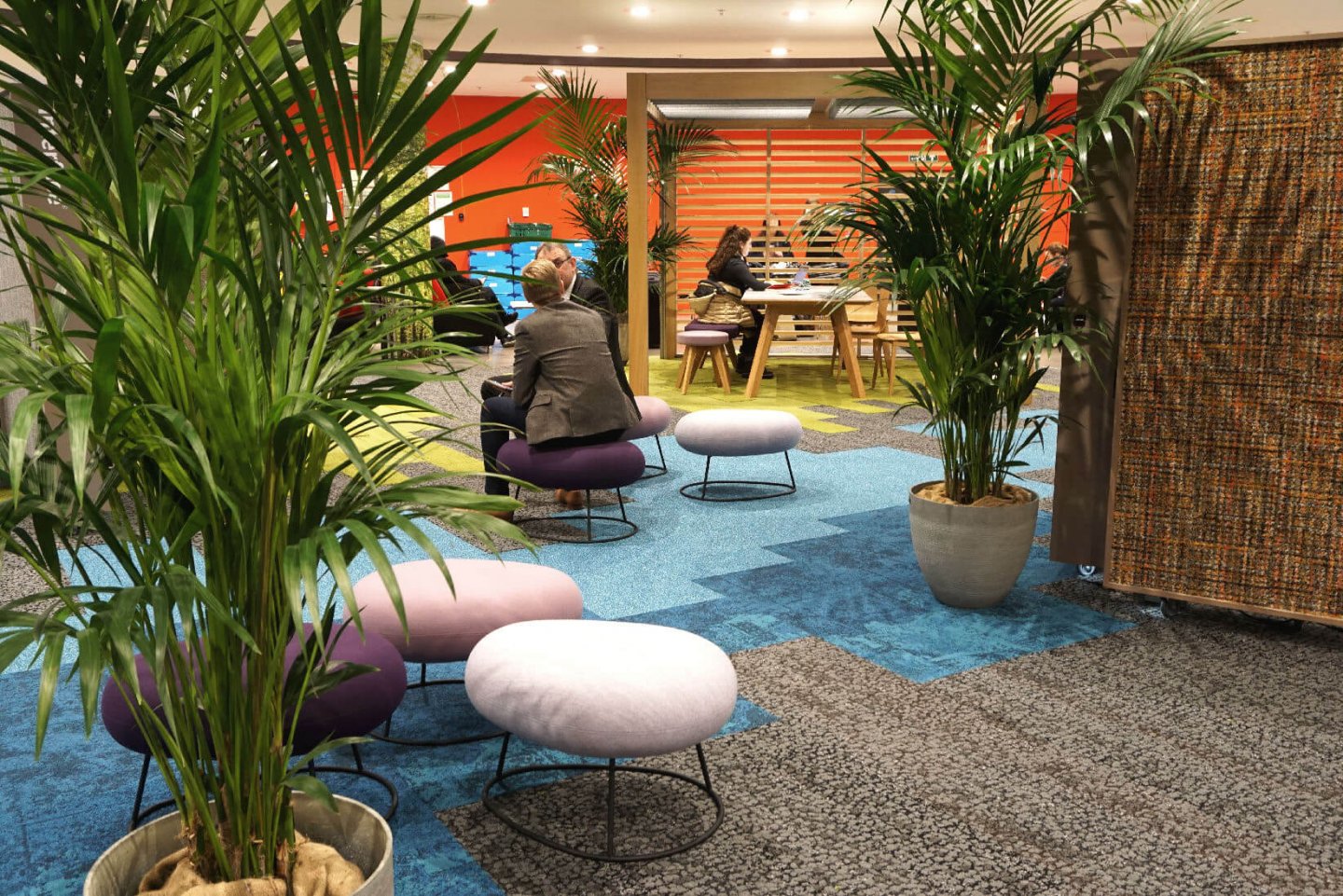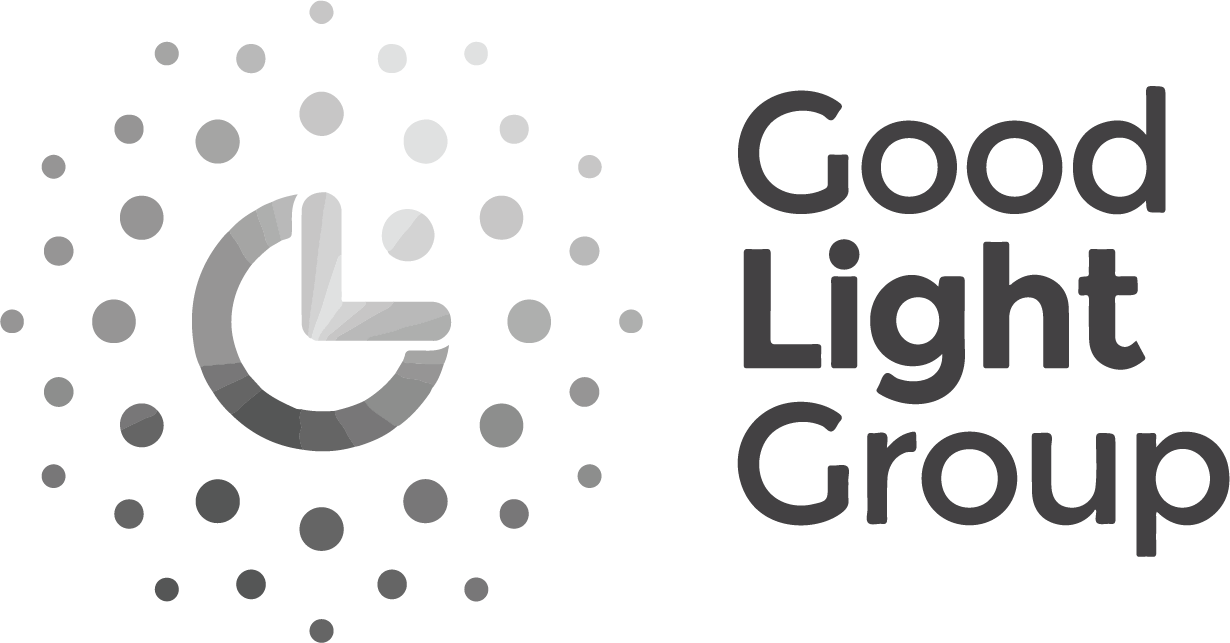- Contact us to discuss our residential design packages
- Design
- Inspire
- About
- About
- Blog
- The Importance of Biophilic Design

- February 25, 2019
- Carolann Kelleher
With our own renovation works starting, we have been looking at some design inspiration. One key design trend that has caught our attention is Biophilic design. But what is biophilic design?
Biophilia is defined as the hardwired human inclination to affiliate with nature. The term was first popularized by American psychologist Edwards O Wilson in the 1980’s when he observed the increasing rates of urbanisation and how it was leading us to disconnect to nature. Biophilic design has become a big influencer recently and rightly so. It has become an innovative way of designing spaces where we live, work and learn by incorporating natural materials, natural light, and greenery. The built environment influences stress levels and has a major impact on our overall health. We spend an alarming 90% of our lives indoors. We have become more and more urbanized, resulting in a decline in our connections to nature. Add in the advancement of today’s technology, we tend to forget to switch off and are neglecting that human-nature connection we crave and need. Biophilic design means designing inspirational and restorative places that connect humans to their surroundings.

The importance of Biophilic design.
But, why is this important? The World Health Organisation expects that stress related illness, such as mental health disorders and cardio-vascular disease, will be the two largest contributors to disease by 2020. Research has shown that by incorporating direct or indirect natural elements into our built environment reduces stress, blood pressure levels and heart rates, whilst increasing productivity, creativity and improvement in our over-all wellbeing. While most research is all still relatively new, the growing evidence is beginning to reveal positive effects of biophilic design.
Biophilic Design at its core
We need to recognise and articulate the individual elements of what constitutes biophilic design. Science and psychology help us define it, so that we can understand how to apply each element when considering human needs within design. Not every space can be designed to incorporate all the principles, but a few contributing elements will help to enhance the well-being of an interior space. There are 3 core categories.

Nature in the Space
Direct sensorial contact with nature in a space doesn’t simply mean placing a potted plant or two within a space. Interaction with the natural world such as having a view of nature; or by using plants, water features, natural air-flow or breezes, sounds and scents. Design using this group of patterns will create meaningful, direct connections with natural elements through diversity, movement and multisensory interactions.
Natural Analogues
With Natural Analogue patterns, we use elements with an indirect connection to nature that helps create a link to the brain that sparks the same sense of well-being as being in a natural environment. By mimicking the natural forms and textures of nature through the use of textiles, artwork, light, shapes or patterns you can re-create the biophilic human connection, and therefore the healthy responses, to the great outdoors.
The Nature of the Space
Patterns define how we relate to the building, room or space around us on a deeply human level. We have an innate desire to want to see beyond our immediate surroundings and can be fascinated with the slightly dangerous or unknown. Obscured views, design revelations, installations and moments of mystery or peril excite us and maintain our interest and enthusiasm. Combining these elements with patterns from the other two groups provides maximum impact in biophilic design.
- Design
- Biophilia, Biophilic Design, Contract Interiors, Creativity, Design, Interior Design, Interiors Trends, Trend

About Carolann Kelleher
Carol-Ann fell into the world of design and hasn’t looked back. In her spare time she likes to utilise her creativity by experimenting with photography.
Browse by category
Browse by tag
- #IDSW2019
- 2019
- 2021
- 2022 Award Winners
- 48 volt track
- About Us
- Ambient Lighting
- Architect
- Art
- Arturo Alvarez
- Awards
- Bathrom
- Bathroom
- Bathroom Design
- Bathroom Lighting
- Baynetcap
- bedroom lighting
- Behind the Scenes
- Biophilia
- Biophilic Design
- Blanchardstown Shopping Centre
- Blog Post
- Blue
- Brands
- building materials
- bulbs
- Carton House
- church design
- Colour
- Comfort Lighting
- commercial
- commercial design
- Contract Interiors
- cost
- Cottage Design
- Creativity
- Deconstructing
- decorative lighting
- Denise O'Connor
- Design
- Design Team
- Details
- Dining Space Lighting
- Downlighting
- downlights
- E14
- electrician
- Electrics
- Emotion
- Emotional Lighting
- enviromentally friendly
- Estluz Laverd
- Exhibitions
- Experience
- experiential showroom
- Exterior Lighting
- external lighting
- eyelit65R
- Festoon Lighting
- Finalists
- Finances
- first fix
- five star hotel
- floor lamp
- Floor Light
- Floor Plan
- flooring
- functional lighting
- Garden
- Garden Lighting
- Getting the lighting right
- Glare
- GU10
- guide
- Haberdashery
- Hard Wood Flooring
- healthy lighting
- Heart of the home
- hidden lighting
- hints
- Home
- Home renovation
- house design
- Hypro
- Illuminated Furniture
- IMNDA
- importance of windows
- inchsawmills
- Interior Design
- Interior Lighting Design
- Interiors Trends
- International Dark Sky Week 2019
- internorm
- IP Rating
- Irish Times
- Ivela
- Jan Battles
- kitchen
- Kitchen Design
- Kitchen lighting
- Kitchen Squeeze
- Lampshades
- Landscape Lighting
- Layers of Light
- LED
- LEED
- Light
- light and health
- Light Art
- Light Brands
- Light Design
- Light Effects
- Light Fitting
- light masterplanning
- Light Pollution
- Light Technology
- lightbulbs
- Lighting
- Lighting Company
- lighting controls
- Lighting Design
- lighting designer
- Lighting Designers
- Lighting Plan
- Lighting Products
- lighting switches
- lighting tips
- LIT awards
- Living Space Lighting
- LND
- LZF
- Minimal Glare
- Monica Duggan
- mood lighting
- Motor Neurone Ireland
- munster joinery
- Nest
- new build
- New Year
- new york
- newbuild
- Newsletter
- night time lighting
- NYCxDESIGN
- Online Consultation
- Open Plan Space
- Our Team
- Outdoor
- Outdoor Lighting
- Parquet FLooring
- pendant light
- Pendants
- Piet Oudolf
- plastering
- plumbing
- Power of Switching
- Prolicht
- recessed lighting
- reducer
- reflections
- renovate
- Renovation
- Residential Lighting
- Residential lighting design
- retail
- Retro Fit
- riai
- salvaging
- scene setting
- Self build
- Self Build Newsletter
- selfbuild
- senator
- shadows
- sonos
- spacer
- Spotlights
- st bartholomews church
- Studio Italia
- sustainable
- sustainable building
- switching
- table lamp
- Table Light
- talalighting
- Task Lighting
- The Irish Times
- timber frame
- tips
- Trend
- tricks
- UGR
- Unified Glare Rating
- voliere
- willie duggan
- willieduggan
- Windows
- wiring





- Inspire
